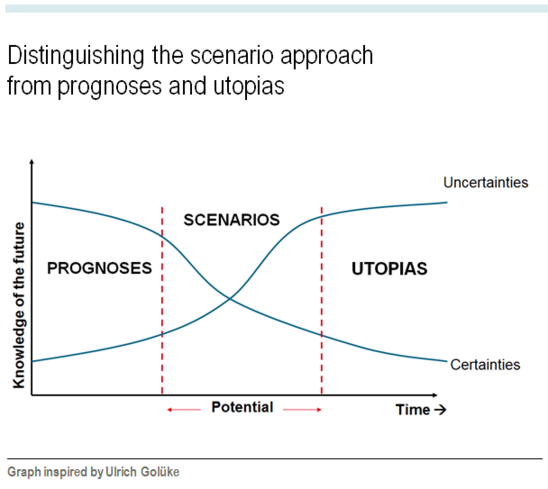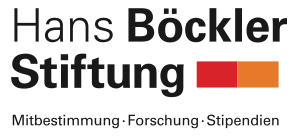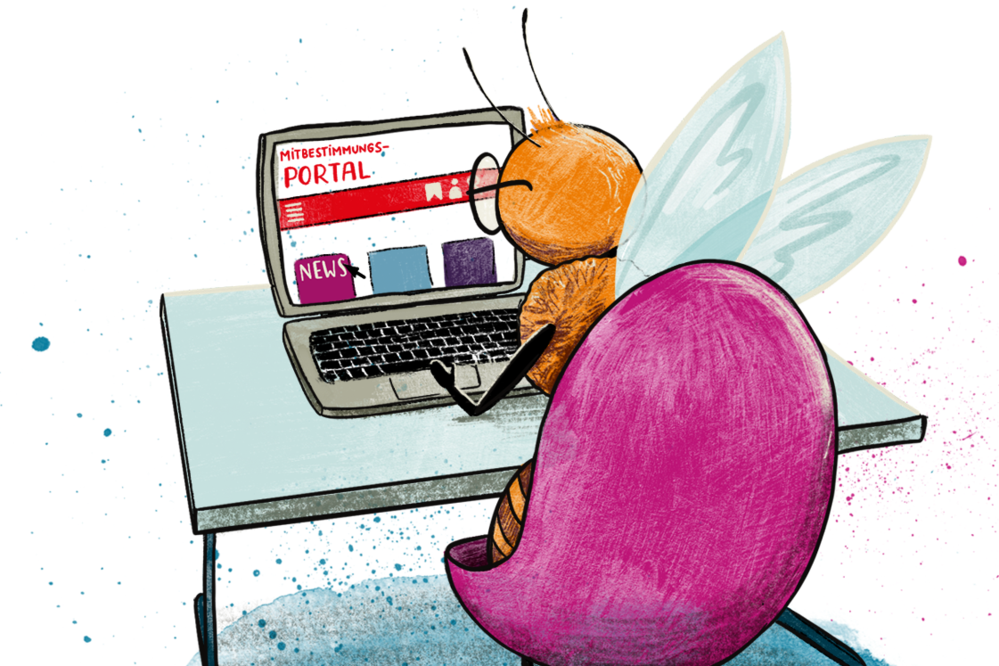What are scenarios?
Scenarios cannot predict the future. However, they can help us to cope better with the uncertainties of an open future. We can get a better idea of how the decisions we make today will affect work and life tomorrow.
Ged DavisScenarios are stories about the future, but their purpose is to make better decisions in the present.
We still don’t know how the world of work in Germany will look in 2035. We cannot predict the future; it is open. But the good thing about that is that it gives us the opportunity to influence how things turn out. On the other hand, that means that we’re always to some extent in the dark when making decisions and acting, not knowing how today’s decisions and actions will turn out in the fullness of time. Frequently, we have a limited view of the future and our options for affecting it. All too often we are overwhelmed by haste and multifarious everyday demands, a narrow view of the evidence and the mere extrapolation of current trends. Only when people’s backs are up against the wall does anything get done and even then only reactively and under pressure. Using scenarios we can extend our gaze to take in longer-term opportunities and risks and thus to integrate our activities more closely. Good scenarios are plausible, but at the same time also novel and challenging. They open up new perspectives.

It is already evident that scenarios are not about predicting the future. Apart from anything else, the fact that there are several possible scenarios for every question distinguishes them from forecasting. Scenarios also differ from utopias, which are usually played out in ‘a distant land at some indeterminate time’. This is because scenarios take the present day into account, as well as the path dependencies that go with it and thus establish a clear link to the present situation. They lie somewhere between what we already know about the future in all probability and what is still entirely unknown.
Instead of giving an unambiguous answer to the question about the future, like a forecast, key uncertainties are identified. What factors will exert a decisive influence, even though today we can scarcely imagine how they will turn out in the future. Which causal connections could bring about one development or another? What would be the relevant effects in that case? An important aspect of all this is that one is almost compelled to think about what really counts with regard to the underlying question. After all, we have to simplify reality in order to be able to act. The question is, therefore, what do we take into account and what do we leave out? It is not a matter of completeness but of relevance – and that means of our mental models, with which we (unconsciously) explain the world. By tackling these questions intensively various theories arise concerning the fundamental alternatives harboured by the future.
The scenarios arising from this approach illustrate the development alternatives we have identified, with their respective challenges. This is for the purpose of exploration, sounding out and evaluation. Seeing how scenarios play out equips us better to cope with different developments. Louis Pasteur already knew that ‘Luck favours the prepared mind’. Scenarios help us to pass from passive mode – ‘hopefully nothing terrible will happen’ – to an attitude that puts room to manoeuvre centre-stage: what are our options if this or that happens? Or: what can we do to promote or hinder this development?
In the scenario overview a frame of reference therefore emerges, a ‘time map’, which also serves to enable constructive exchange with others. Communication with and about scenarios is also favoured by the fact that it generally involves stories that address not only our analytical understanding but our emotions. Scenarios are multi-layered and ambiguous and have both light and shade – like real life. Scenarios can easily be distributed; people pass them on.
The scenarios on codetermination in 2035 are thus to be understood as an invitation to dialogue; to reach an understanding with others concerning what will be of decisive importance for the future of codetermination in Germany; what kind of future we would like to have; and what we have to do today to make it happen.
Adam Kahane (2013), Transformative Scenario Planning: Working Together to Change the Future, Berrett-Koehler Publishers, San Francisco.
Sascha Meinert (2014), Scenario building, European Trade Union Institute (ETUI), Brüssel
Peter Schwartz (2. Aufl. 1996), The Art of the Long View: Planning for the Future in an Uncertain World, Doubleday, New York.
Kees van der Heijden/Ron Bradfield/George Burt/George Cairns/George Wright (2002), The Sixth Sense: Accelerating Organizational Learning with Scenarios, John Wiley and Sons, New York.




